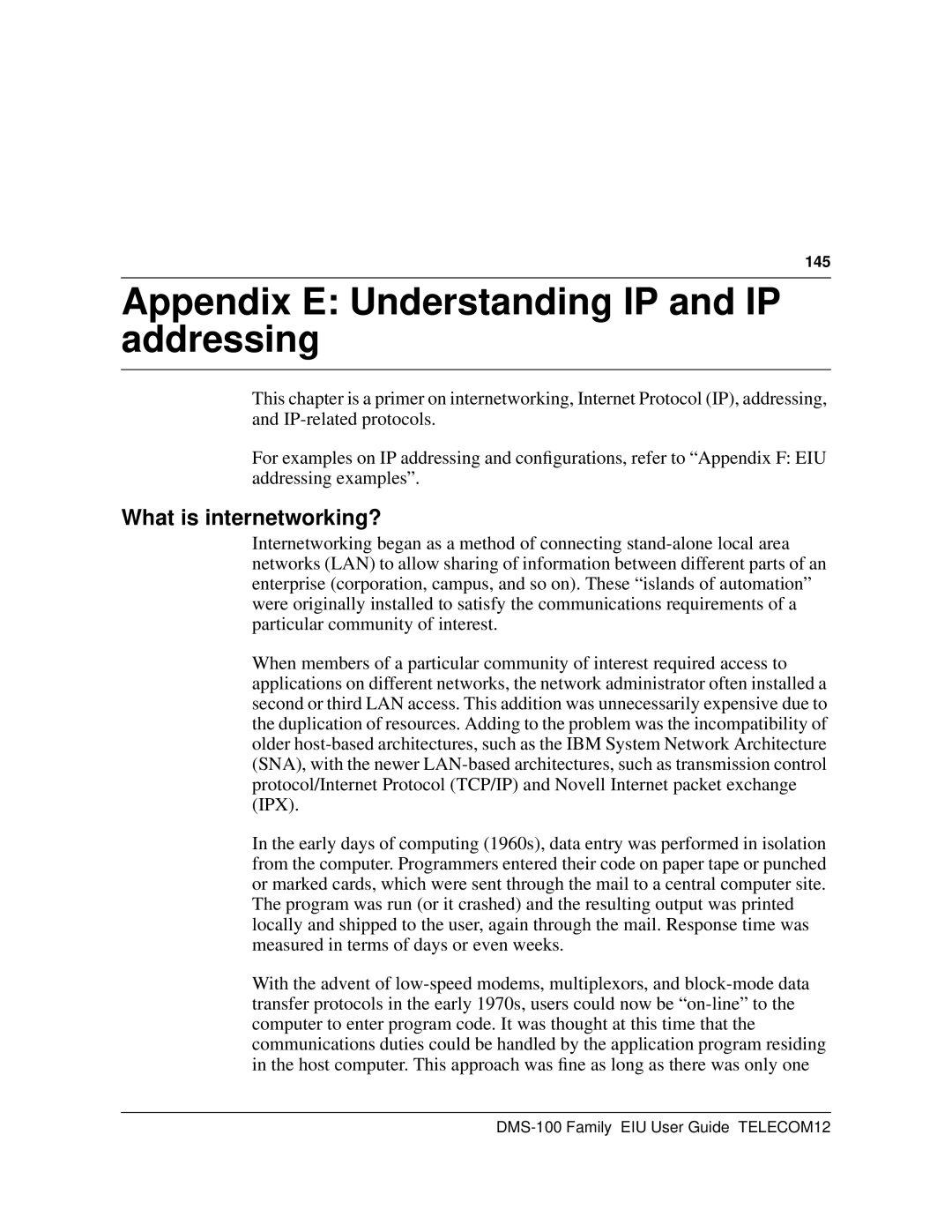
145
Appendix E: Understanding IP and IP addressing
This chapter is a primer on internetworking, Internet Protocol (IP), addressing, and
For examples on IP addressing and configurations, refer to “Appendix F: EIU addressing examples”.
What is internetworking?
Internetworking began as a method of connecting
When members of a particular community of interest required access to applications on different networks, the network administrator often installed a second or third LAN access. This addition was unnecessarily expensive due to the duplication of resources. Adding to the problem was the incompatibility of older
In the early days of computing (1960s), data entry was performed in isolation from the computer. Programmers entered their code on paper tape or punched or marked cards, which were sent through the mail to a central computer site. The program was run (or it crashed) and the resulting output was printed locally and shipped to the user, again through the mail. Response time was measured in terms of days or even weeks.
With the advent of
